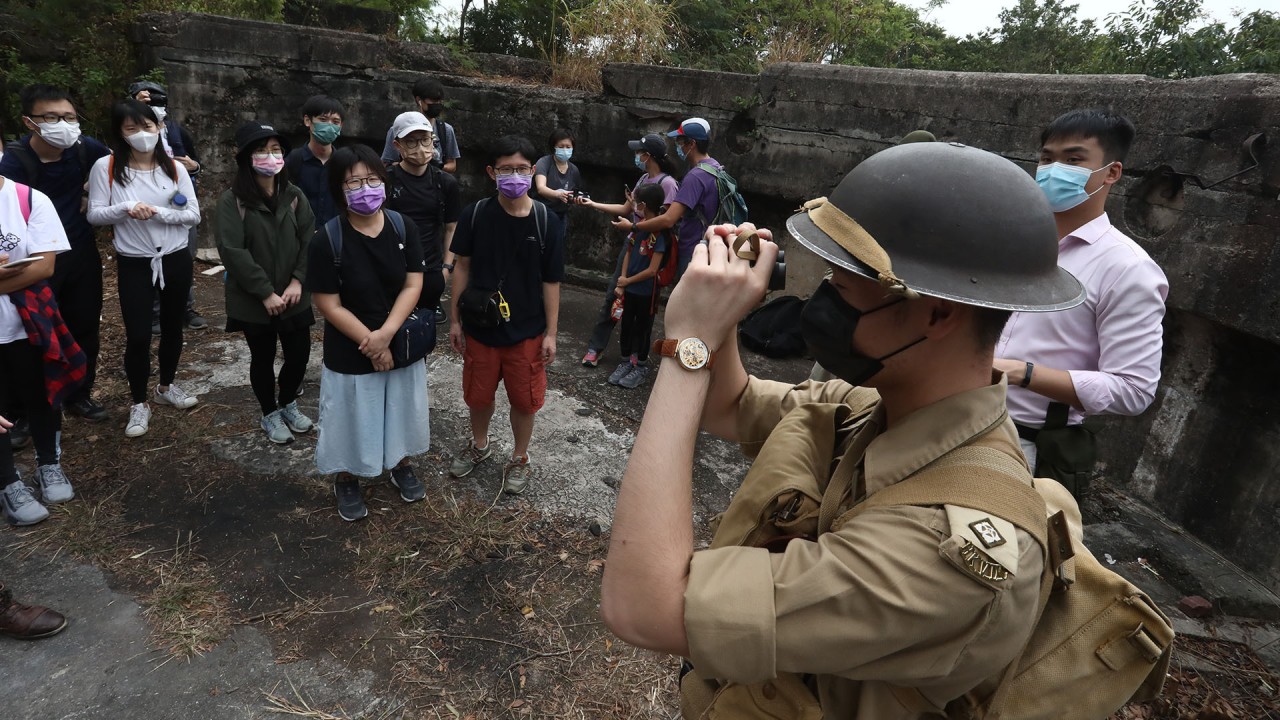
History buffs bring World War II Battle of Hong Kong to life with tours of military sites and by sharing the accounts of soldiers who fought Japanese invasion
- The Watershed Hong Kong Facebook page was set up by history enthusiasts to share stories about the Battle of Hong Kong during World War II
- The history buffs, who lead tours of wartime sites, sometimes in period uniforms, say Covid-19 curbs on travel have prompted increased interest in their outings
It was at a pre-graduation clean-up in the Ricci Hall student residence at the University of Hong Kong in 2015 that Taurus Yip Kwan-kit stumbled upon a short biography of alumnus Jose Guterres in a 1954 Silver Jubilee Journal.
Guterres, who graduated in 1930, was an officer in the Hong Kong Volunteer Defence Corps when the British colony fell to Japanese forces 80 years ago after 18 days of combat between December 8 and 25, 1941 in what is known as the Battle of Hong Kong.
“One page in the book was dedicated to those who died during the Battle of Hong Kong and Guterres was one of six mentioned,” explains Yip. “He had guarded the Mount Davis battery.” The Mount Davis battery comprised three coastal defence gun emplacements at the western end of Hong Kong Island.
When the British surrendered Hong Kong to the Japanese on Christmas Day, 1941, Guterres was taken to a prisoner-of-war camp in Sham Shui Po. He died from dysentery at St Teresa’s Hospital in July 1942 and was buried at Stanley Military Cemetery.
“We didn’t learn about this kind of history at university so we wanted to find out more,” says Yip, 29. “Before, when we studied history, we were told stories from the point of view of Germany and the United States, not from the British or Hong Kong side.”
Yip began researching the Battle of Hong Kong and started a Facebook page called Watershed Hong Kong, looking for and promoting World War II stories. His posts attracted other people in Hong Kong who are also military history buffs, and they have since led numerous tours to military sites above Shing Mun Reservoir in the New Territories, at Wong Ngai Chung Gap above Happy Valley, and on Mount Davis.
What the Japanese were doing in Hong Kong before second world war invasion
With the coronavirus pandemic having deterred many Hong Kong people from travelling, Watershed Hong Kong has seen a surge in interest in its tours, with many people looking for new places to see and visit.
“Before the pandemic, we would do eight- to 10-person group tours during the autumn or winter. So far, we’ve done over 40 tours,” says Yip. Watershed Hong Kong’s tours are filled up within days of being announced in a Facebook post, he says.
In November a three-hour tour to Mount Davis had just under 30 participants, mainly young people, although Yip says retired people and families have joined other tours. A private minibus took the group from Kennedy Town to near the top of the hill.
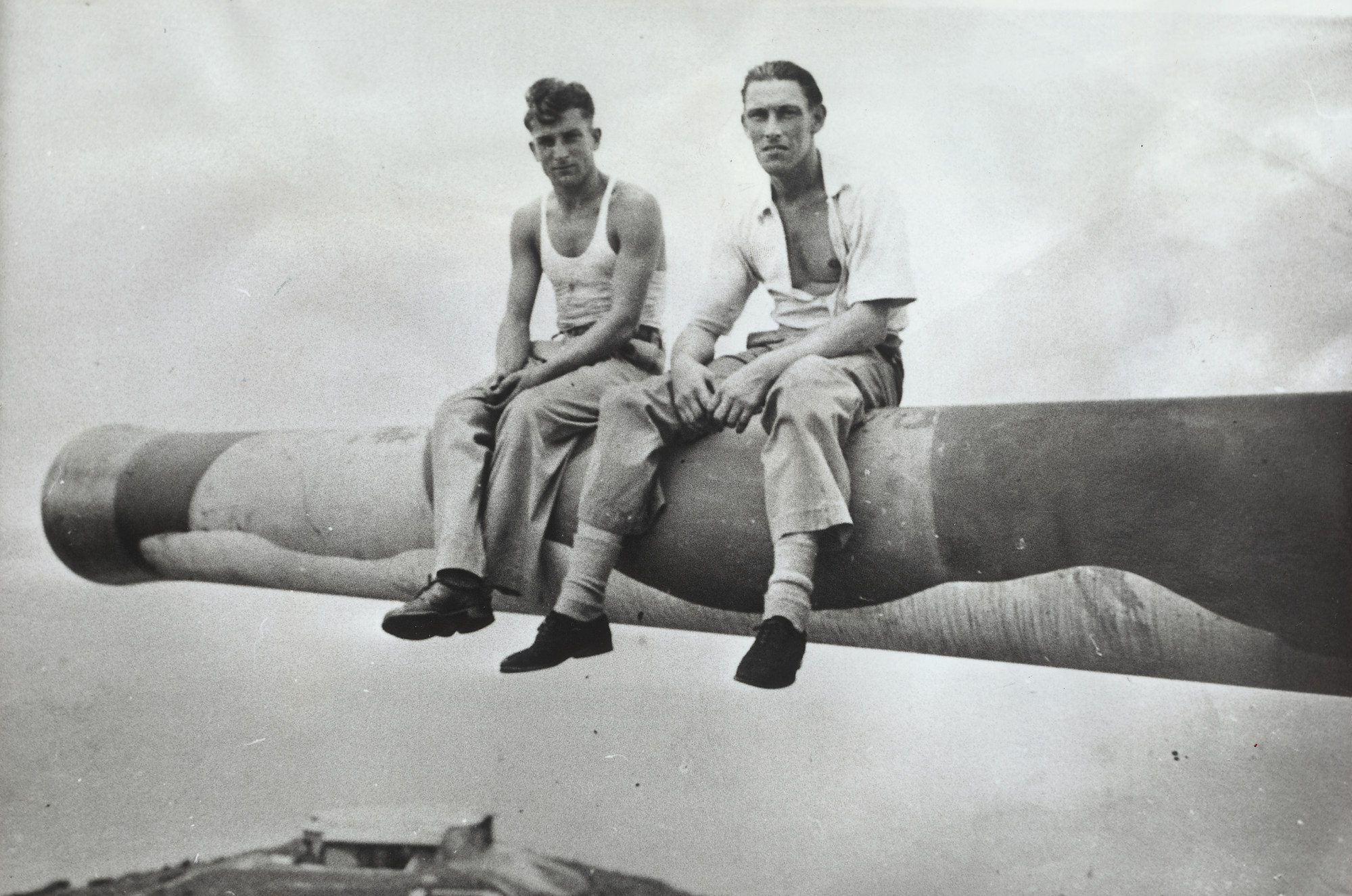
There, Yip and Franco Yeung Man-kiu, 27, explained that the Mount Davis battery was built between 1912 and 1915. They pointed to a steeply sloping road behind them. “There were no tracks here, no machines 100 years ago to build the battery. They used Chinese labour to build the slope, as well as donkeys and wagons to move armaments and supplies to the top.
“Around this time many migrants from China came to Hong Kong seeking work, or as a springboard to Southeast Asia or America,” says Yip. “The British army had a good relationship with these Chinese migrants. Rarely do ordinary people have a relationship with the army today.”
Near the top is a large gun emplacement – or what is left of it – a deep circle where there would have been a round metal platform with a cannon firing 9.2-inch shells mounted on it.

Yeung and Yip give some interesting statistics: a shell would have weighed 380lbs (172kg), four people were needed to carry each one, and they were filled with 60lbs of explosives. The shells could be fired as far as 22km (13.6 miles). At least 11 people were needed to man the emplacement; the shells were kept in underground magazines nearby.
The battery was in use during the Battle of Hong Kong, with British, Canadian, and Indian soldiers as well as the Hong Kong Volunteers defending the colony against the invading Japanese. On December 14, 240mm shells hit the Mount Davis battery, and the guns were disabled to stop the Japanese using them.
To add a touch of authenticity and atmosphere at the battery, Yeung dressed up as a second lieutenant from the Royal Hong Kong Regiment with khaki uniform and a saucer-shaped metal helmet with a chin strap.
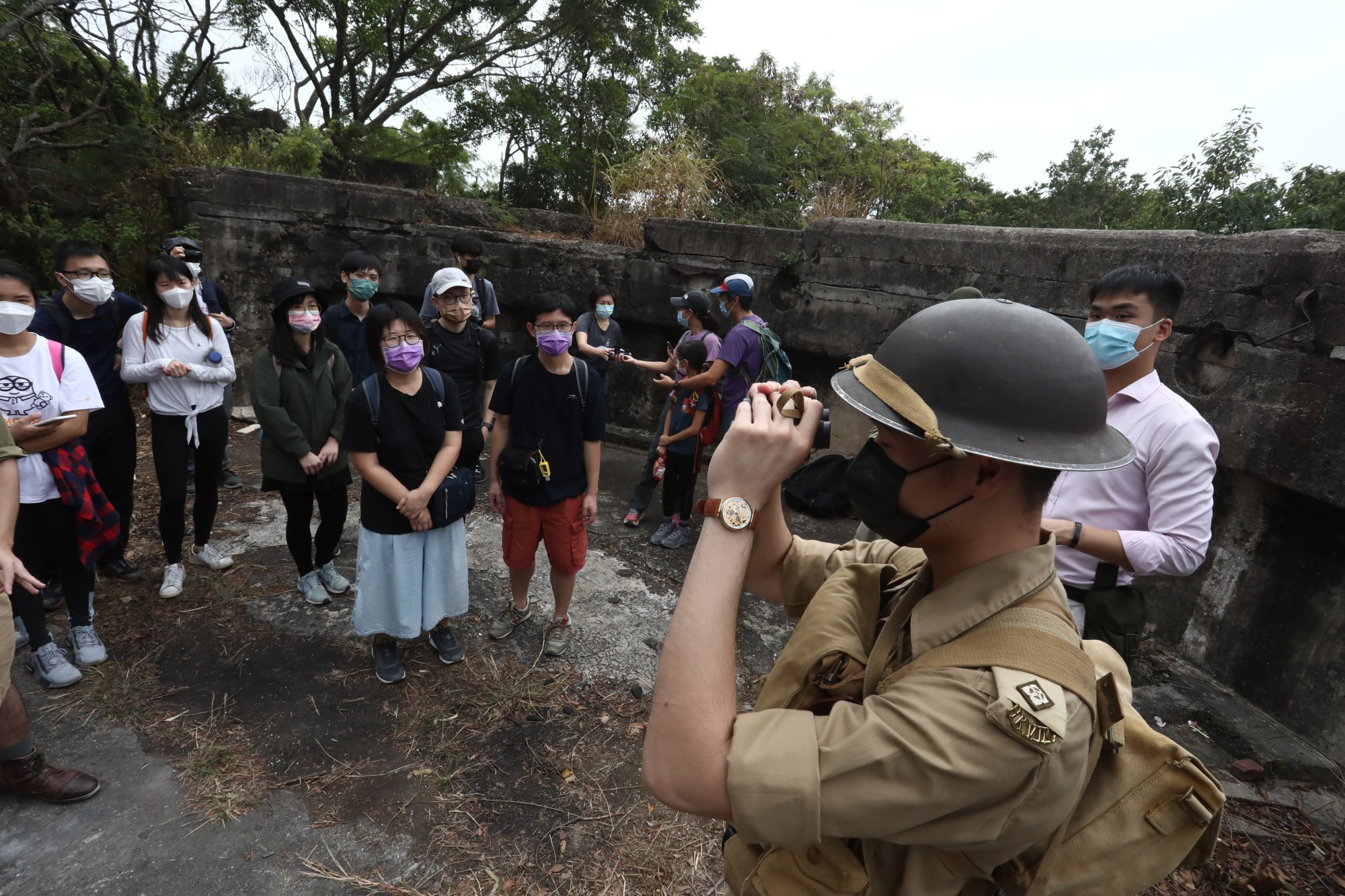
“I don’t like wearing it because it’s very heavy. After an hour your neck is sore. When you look at the old pictures, the soldiers wore these helmets on a slant because they thought it was cool. I don’t – I think it’s taxing. It’s more comfortable without having to wear the chin strap,” explains Yeung.
Watershed Hong Kong puts a lot of effort into finding authentic uniforms and items from the time. “The shirt I’m wearing is actually from the Pakistani army. They still wear this,” Yeung says. His shorts are modified to match the photos they have, and he wears knee-high socks and black leather lace-up boots.
During his show-and-tell, he carries a squarish bag around his neck and asks people to guess what it is – a gas mask. He also carries a replica pistol, a map, compass, binoculars, and inside the jacket is a pocket that holds gauze and bandages.
Looking at ruins … we may not be able to imagine what really happened here during the war … That’s why we tell more stories about ordinary civilians and soldiers.
Meanwhile Galton Ho Kam-wah, 48, is dressed like a Japanese sergeant major, much to the interest of the tour participants.
The Japanese sergeant carries a gas mask, pistol, compass, binoculars and a small notebook, money from that period, and a small rising sun flag. He wears a hat that has detachable flaps on the back to protect his neck from the sun.
Before leaving the battery, Yip encouraged the tour group to look around the small, low-slung buildings where the soldiers lived, and where they stored munitions.
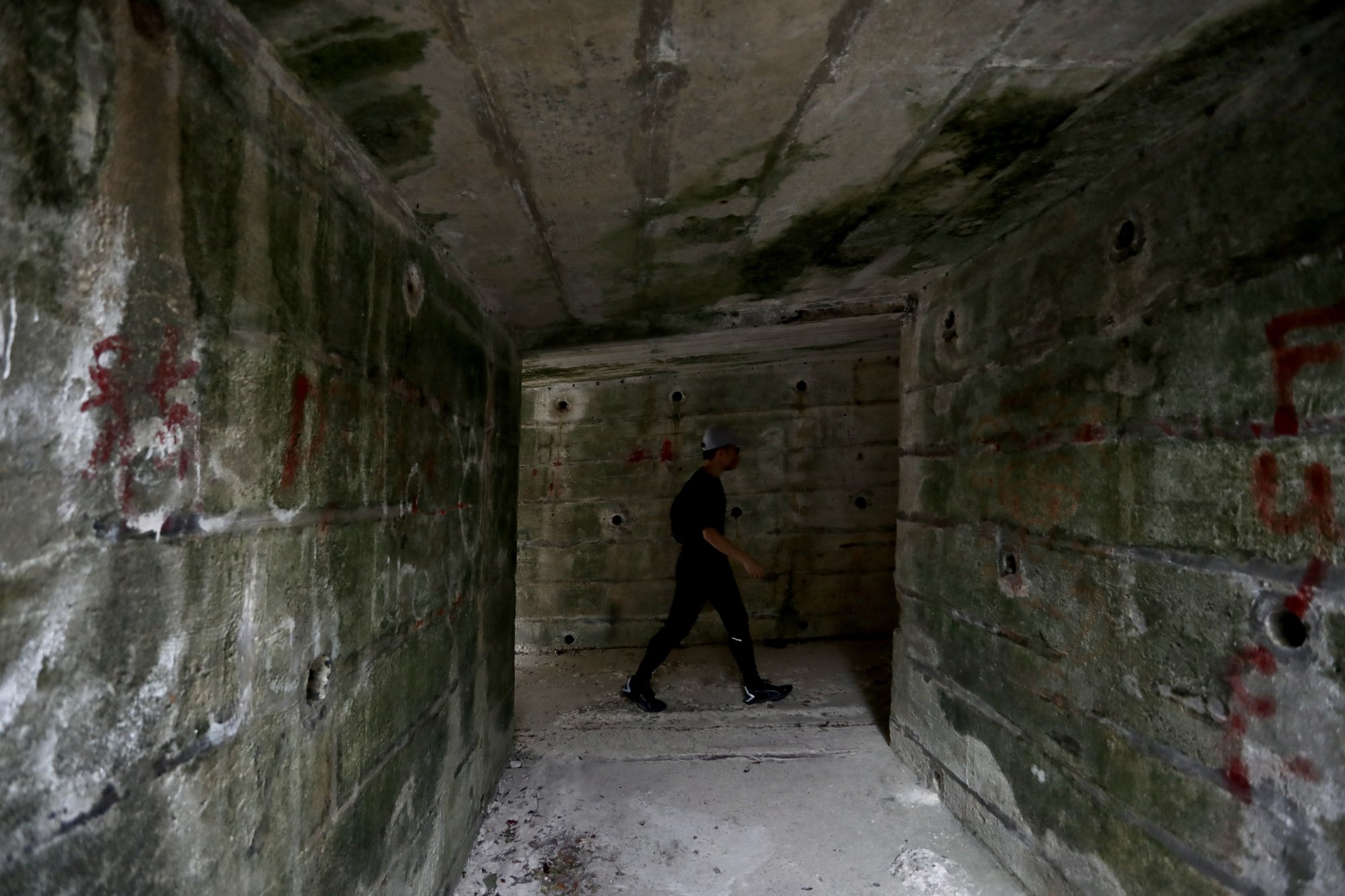
The group headed down the steep winding road and crossed Victoria Road to the University of Chicago Francis and Rose Yuen Hong Kong campus, which also houses a former battery.
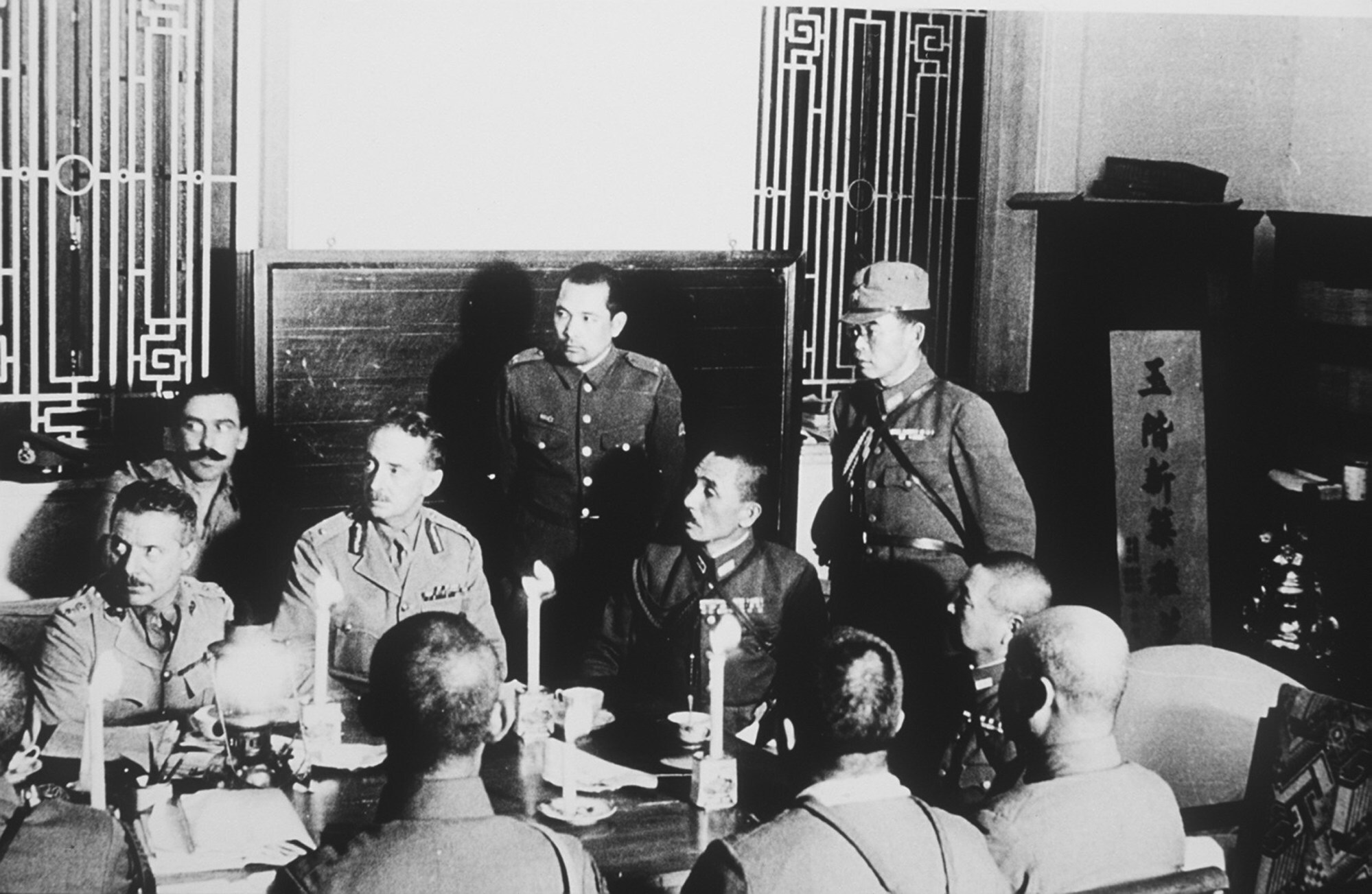
He went to Britain to practise medicine, but returned to Hong Kong two years later. After retiring from medicine, Bard followed his true passion, archaeology.
He was a founding member of the University Archaeological Team (later the Hong Kong Archaeological Society), and was the first executive secretary of the Hong Kong government’s Antiquities and Monuments Office and participated in archaeological investigations. Bard died in Sydney, Australia in 2014.
Yip says stories like those of Bard and Guterres offer interesting individual accounts of the Battle of Hong Kong. “That was a watershed event for them, which is why we chose this name for our group,” he says.
After Guterres’ grandson posted a comment on a Facebook group about the Battle of Hong Kong, Yip met him and other descendants of Guterres in 2019, when he arranged for them to visit Ricci Hall.

Yip and his fellow Watershed Hong Kong members continue to collect stories, most recently those of Indian soldiers who fought in Hong Kong in 1941.
“A local Indian friend helped translate a story about a Punjab soldier, Sepoy Resham Khan, and spread it to his community,” explains Yip.
“This past summer, his grandson contacted us to express his gratitude. We finally met him at his office at Central in September and found out more about his grandfather.”
Yip believes these personal stories bring big historical events to life.
“Just by looking at ruins like what you see behind me, we may not be able to imagine what really happened here during the war, or how ordinary people survived the conflict,” he said.
“That’s why we tell more stories about ordinary civilians and soldiers. Only then can we truly understand how people faced those changing times, protecting their homeland or striving to do their best to contribute to society.”


